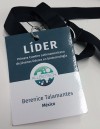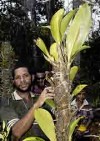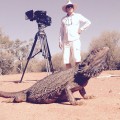
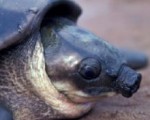

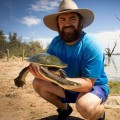


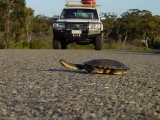
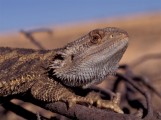
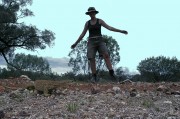
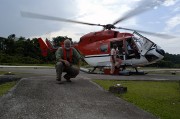
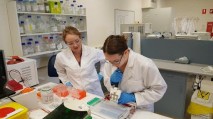
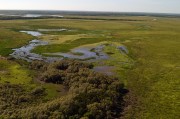
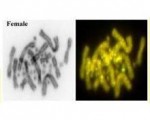

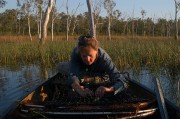





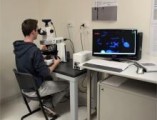
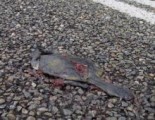
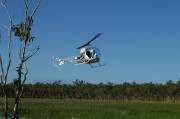
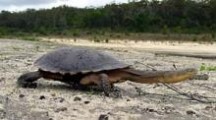


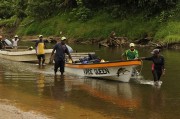
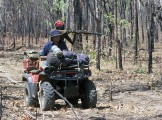
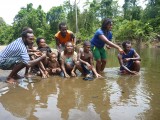

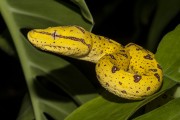

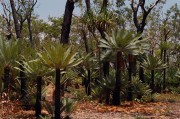
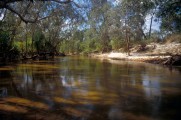
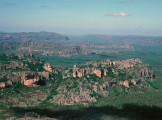
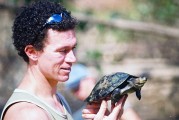

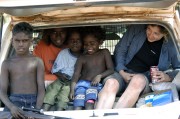
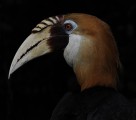
Blog
New Guinea -- Last bastion against Chytrid
Posted in Uncategorized on Jun 03, 2019
Earth’s sixth major mass extinction event has begun and amphibians in particular are in peril; over 40% of amphibian species are threatened with extinction. One agent in their demise is chytrid fungus Batrachochytrium dendrobatidis, responsible for the most widespread, disease-induced declines and extinctions in vertebrates to date. New Guinea is the world’s largest tropical island and the last major center of amphibian biodiversity free from chytrid. Deb Bower, Simon Clulow and their colleagues call for urgent, unified, international, multidisciplinary action to prepare for the arrival of chytrid in New Guinea, to prevent or slow its spread within the island after it arrives, and to limit its impact upon the island’s frog populations.
Representational genome sequencing for bacterial pathogen identification
Posted in Uncategorized on Mar 27, 2019
Bacterial identification methods used in routine identification of pathogens in medical microbiology can include a combination of biochemical tests, mass spectrometry, barcode sequencing (16S) or whole genome sequencing. in a paper that came out today in the Journal of Microbial Methods, PhD student Berenice Talamantes explores the utility of reduced representation sequencing for the identification of bacterial pathogens. She has also applied the technique to environmental microbes in work yet to appear.
Hemiclonal Gudgeons -- for those who thought sex was simple
Posted in Uncategorized on Mar 19, 2019
In a paper that appeared this week in Scientific Reports, Peter Unmack and his colleagues describe work on a hemiclonal 'ghost' lineage of gudgeons from south eastern Australia. They identified a vulnerable sexual population of gudgeons that is involved in two hemiclonal lineages, and provide perspectives on several important issues not previously explored by other studies on ghost species, but relevant to their detection, conservation, and artificial recreation.
dartR -- an R package for SNP data
Posted in Uncategorized on May 14, 2018
Our exciting new R package that appeared recently in Molecular Ecology Resources -- dartR for facilitating analysis of SNP data generated from reduced representation genome sequencing -- has had an upgrade. We are pleased to announce that version 1.0.5 has now been uploaded to CRAN, and has a number of new features -- population assignment, links to PAUP SVDQuartets analysis, improved fixed difference analysis and other new features.
Berenice Talamantes attends the First Youth Latin-American summit
Posted in Uncategorized on Oct 25, 2017
Berenice Talamantes Becerra recently attended the First Youth Latin-American biotechnology summit held in Santiago, Chile where she presented her ideas on the challenges we face with bioanonymity. She gives an account of the conference here.
Electric Ants
Posted in Uncategorized on Sep 21, 2017
IAE staff and students were just treated to an expose' on electric ants on the Big Island, Hawaii, delivered by PhD candidate Michelle Montogomery. These fascinating little creatures switch life history as opportunity presents, becoming highly invasive under the right conditions. Australia will soon be witness to their biology and impacts as they spread through Queensland.
PNG Frogs
Posted in Uncategorized on Aug 04, 2017
Amphibians are under threat world wide from a range of pressures including an emergent disease, chytrid fungus. Many have gone extinct, others have undergone dramatic declines. A few global refugia provide a glimmer of hope, such as the island of New Guinea to our north. A team of concerned scientists, including from the Institute for Applied Ecology, are calling for immediate pre-emptive action to save the global frog population. They argue for a reasoned path forward in the latest edition of the journal Science. Lead author Deb Bower and co-author Simon Clulow visited Wau Creek in the Kikori facilitated by the Piku Team in 2015 and 2016. Clearly this got the intellectual juices flowing!!
New Guinea Orchids
Posted in Uncategorized on Aug 04, 2017
Really pleased to see the opportunities to work in PNG panning out for Jasmyn Lynch of the IAE with her new and insighful article entitled "Respect, reflect, and engage – enhancing biophysical research practices with Indigenous people, their land, and culture" that appeared yesterday in the Australasian Journal of Environmental Management, Well done Jasmyn!! The work is funded by the Hermon Slade Foundation.




